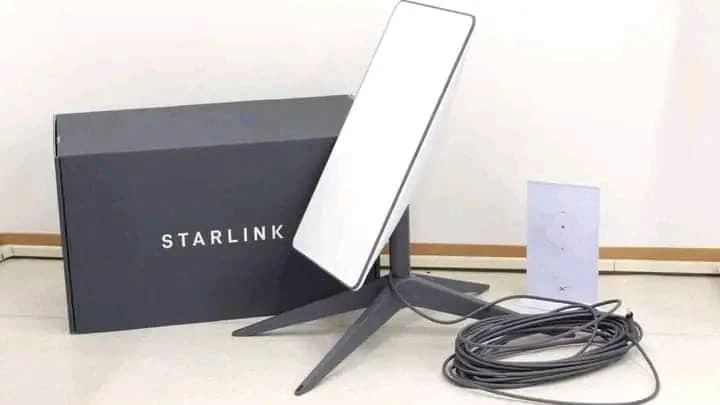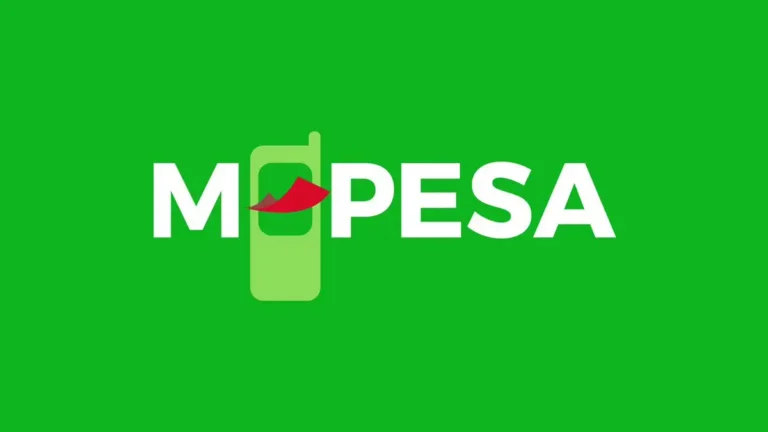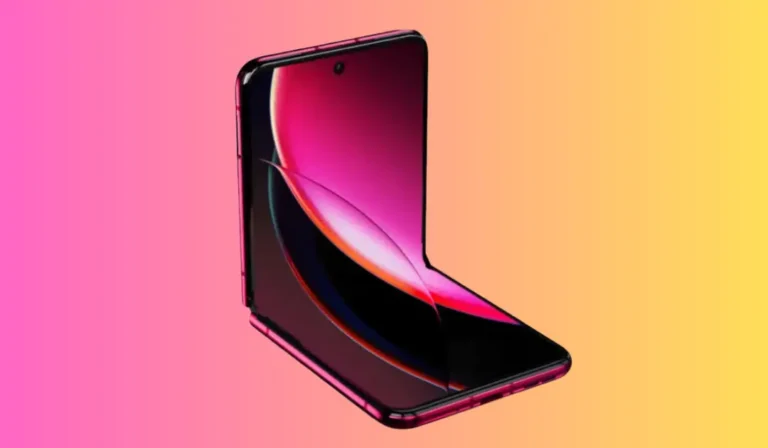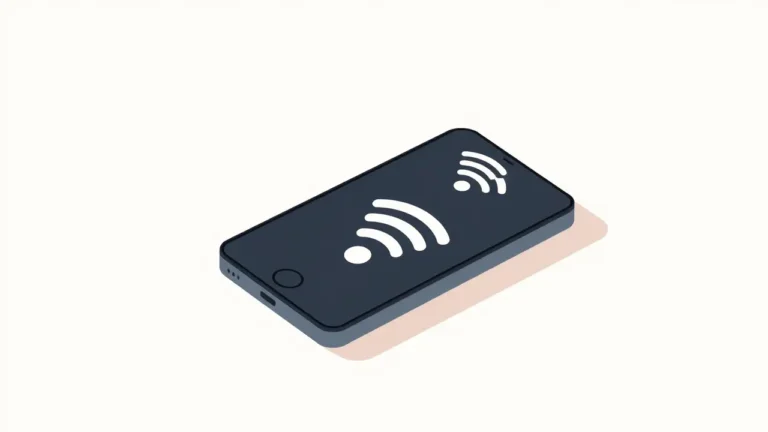Starlink is shaking up internet access in Kenya. Elon Musk’s satellite internet service has launched a new affordable plan, aiming to bring high-speed connectivity to more Kenyans.
The new Starlink Mini kit costs KSh 27,000 with a monthly fee starting from KES 1300, offering speeds up to 100 Mbps. This lower-priced option targets budget-conscious customers who want fast, reliable internet.
Kenya’s largest telecom company Safaricom is taking notice. They recently boosted their fiber internet speeds to compete with Starlink’s satellite service. The two companies are even in talks about potential future partnerships.
What is Starlink?

Starlink is a satellite internet service created by SpaceX, Elon Musk’s space exploration company. It uses a network of satellites orbiting Earth to provide internet access.
Unlike traditional internet services that rely on ground-based infrastructure, Starlink can reach remote areas more easily. This makes it a game-changer for rural parts of Kenya where laying fiber cables is challenging.
How does Starlink work in Kenya?
When you sign up for Starlink in Kenya, you get a small satellite dish and a Wi-Fi router. The dish talks to Starlink satellites passing overhead, bringing you high-speed internet.
You can set up the equipment yourself, often in less than an hour. Once it’s running, you can connect your devices just like any other Wi-Fi network.
Starlink’s new affordable plan
Starlink has introduced a cheaper option for Kenyans:
- Hardware cost: about KSh 27,000
- Monthly fee: KES 1300, and 4,000 plans
- Speed: Up to 100 Mbps
This new plan aims to make satellite internet more accessible to a wider range of customers in Kenya.
Benefits of Starlink for Kenyans
- Reach Starlink can provide internet to areas of Kenya where traditional ISPs struggle to reach. This includes rural villages and remote regions.
- Speed with speeds up to 250 Mbps, Starlink offers fast connections for streaming, video calls, and more.
- Reliability Satellite internet can be more stable than ground-based options, especially in areas prone to infrastructure issues.
Challenges and competition
While Starlink offers exciting possibilities, it faces some hurdles in Kenya:
- Cost: Even with the new cheaper plan, the kit is still pricey for many Kenyans.
- Weather: Heavy rain or storms can sometimes affect satellite signals.
- Competition: Established providers like Safaricom are improving their services to compete.
- You need open space to use the kit. With many Nairobians living in apartments, using this tool is not feasible
Safaricom, Kenya’s largest telecom company, recently upgraded its fiber internet speeds in response to Starlink’s entry. They’re also exploring potential partnerships with satellite providers, including Starlink.
How to get Starlink in Kenya
If you’re interested in trying Starlink, here’s what to do:
- Visit the Starlink website
- Enter your address to check availability
- Choose a plan and place your order
- Wait for your equipment to arrive
- Set up your dish and router
The future of internet in Kenya
Starlink’s arrival in Kenya is pushing the entire internet market forward. As competition heats up, Kenyans can expect:
- More affordable options
- Faster speeds
- Better coverage in rural areas
Whether you choose Starlink or stick with a traditional provider, the increased competition should lead to better internet access for all Kenyans.
Starlink’s entry into the Kenyan market
Starlink’s arrival in Kenya has shaken up the internet service industry. The company’s advanced satellite technology promises to bring high-speed internet to areas previously underserved. This development has significant implications for both consumers and existing providers.
Partnerships and regulatory approval
Starlink began operating in Kenya in July 2023 after getting the green light from regulators. The Communication Authority of Kenya played a key role in this process. They set the rules for Starlink’s operations in the country.
Starlink’s entry wasn’t without challenges. Local companies raised concerns about fair competition. Safaricom, Kenya’s largest telecom, called for collaboration between Starlink and local providers. This shows the complex landscape Starlink entered.
Despite these hurdles, Starlink has made progress. They’ve started offering services and are working on expanding their reach across Kenya.
Impact on the broadband market
Starlink’s entry has caused a stir in Kenya’s internet market. Their competitive pricing and wide coverage have put pressure on existing providers. For example, Starlink offers a 50 GB package for 1,300 Kenyan shillings. This is often cheaper than local alternatives that offer about 10-20 Mbps for KES 3000 – 4,000.
The number of satellite internet users in Kenya has also grown. Before Starlink, there were only 405 users. Two months after launch, this number jumped to 1,354. This shows the strong demand for Starlink’s services.
Starlink’s technology allows it to reach remote areas. This is a game-changer for rural parts of Kenya where traditional infrastructure is lacking. It’s forcing other providers to improve their services and expand their coverage.
Service offerings and plans
Starlink offers different internet plans in Kenya to meet various needs and budgets. These options range from affordable residential packages to high-speed business solutions.
Residential and lite plans
Starlink now provides more choices for Kenyan homes. The company recently launched a new affordable plan priced at $30.87 (about 4,000 KES) per month.
The Mini kit gives you speeds up to 100 Mbps. It’s a good choice if you want fast internet without spending too much.
For those needing less data, there’s a 50GB plan that costs 1,300 KES monthly. This option works well if you don’t use the internet heavily.
Starlink also offers a standard residential plan. This plan costs more but gives you faster speeds and unlimited data.
You can choose to buy or rent Starlink equipment. Renting costs 1,950 KES monthly for the hardware plus 1,300 KES for the service.
Starlink for Business
Starlink provides special plans for businesses in Kenya. These plans offer faster speeds and more reliable connections than residential options.
Business plans can reach speeds up to 2TB Mbps. This makes them ideal for companies that need to transfer large amounts of data quickly.
Businesses should expect to pay an activation fee when signing up. This fee covers the cost of the specialized equipment needed for business-level service.
Technological infrastructure
Starlink’s cutting-edge system brings fast internet to Kenya. It uses special satellites and equipment to provide service even in remote areas.
Low-Earth orbit satellites
Starlink’s network relies on thousands of small satellites orbiting close to Earth. These satellites circle the planet at about 550 km high.
This low altitude helps reduce signal delays. It allows for faster internet speeds compared to traditional satellite internet.
The satellites form a “constellation” to provide wide coverage. As they move, they hand off connections to maintain service.
Starlink keeps launching more satellites to expand its network. This improves coverage and capacity over time.
Starlink hardware
To use Starlink, you need a special kit. The main parts are:
- Satellite dish
- Wi-Fi router
- Cables
The dish is small and easy to set up. It automatically aligns itself to find the best signal.
The router creates your home Wi-Fi network. It connects to the dish to bring internet into your home.
Sturdy cables link the parts together. They can withstand outdoor conditions.
The whole system is designed for DIY installation. Most users can set it up in under an hour without professional help.
High-speed internet delivery
Starlink brings fast internet to Kenya. You can get download speeds of 50-200 Mbps, depending on your location and your plan. This is much quicker than many existing options.
The high speeds let you:
- Stream HD video without buffering
- Download large files quickly
- Browse websites instantly
Starlink’s new Mini kit gives speeds up to 100 Mbps. It costs KSh 27,000 ($208) upfront. You then pay KSh 1,300 ($30) per month.
These speeds work well for most online tasks. You can easily stream Netflix, join Zoom calls, or play online games.
Low-latency communication
Latency is the delay between sending and receiving data. Starlink offers low latency internet in Kenya. This means quicker response times when you’re online.
Low latency helps with:
- Video calls – less lag and freezing
- Online gaming – faster reactions
- Web browsing – pages load quicker
Starlink’s satellites are closer to Earth than traditional satellite internet. This cuts down the travel time for data signals.
The result? A snappier internet experience. Web pages load faster. Video calls feel more natural. Online games respond quicker to your actions.
Accessibility and coverage
Starlink is changing internet access in Kenya. It reaches places other providers can’t and offers new options in cities too.
Urban vs rural deployment
In cities, Starlink competes with existing internet options. It’s not always the fastest choice, but it’s reliable. Safaricom recently upgraded its fiber speeds to keep up.
Rural areas benefit most from Starlink. It brings high-speed internet to farms and villages far from cable lines. You don’t need to wait for infrastructure to be built.
The Starlink Mini kit covers 112 m². This is enough for a home or small office. It works well for both city and country users.
Competing with fibre internet
Starlink offers speeds up to 100 Mbps. This is fast, but fiber can be faster in some areas.
Fiber is great where it’s available. But it’s not everywhere. Starlink fills those gaps.
Zuku and other providers face new competition. They might need to improve service or lower prices.
Starlink’s big advantage is reach. It can serve remote locations easily. No need to dig trenches or string cables.
User experience with Starlink
Starlink offers a unique internet experience in Kenya. The service provides fast speeds and wide coverage, even in remote areas. Let’s explore how users set up and manage their Starlink connections.
Setting up the Starlink kit
Getting started with Starlink is simple. The kit includes a dish antenna, router, cables, and mounting hardware. Here’s what you need to do:
- Choose a spot with a clear view of the sky
- You can use Starlink Mobile App to choose a spot with minimal obstructions
- Connect the dish to the router using the provided cable
- Plug in the router and power on the system
The dish will automatically align itself to find the best signal. This process takes about 15 minutes. Once connected, you can expect download speeds up to 250Mbps.
Starlink’s hardware is designed for easy setup. The dish is sturdy and can handle various weather conditions. If you need help, the Starlink website offers step-by-step guides and troubleshooting tips.
Managing connectivity through the Starlink app
The Starlink app is your control center. It’s available for both Android and iOS devices. Here’s what you can do with it:
- Check your connection status and speeds
- View usage statistics
- Adjust network settings
- Get help and support
The app also helps you find the best spot for your dish. It uses your phone’s camera to check for obstructions that might block the signal.
One great feature is the ability to track outages. The app shows you when and why your connection might drop. This helps you plan your internet use better.
Starlink’s uptime in Kenya is impressive. Users report 99% availability, which means very few interruptions. The app helps you stay on top of your connection quality at all times.



